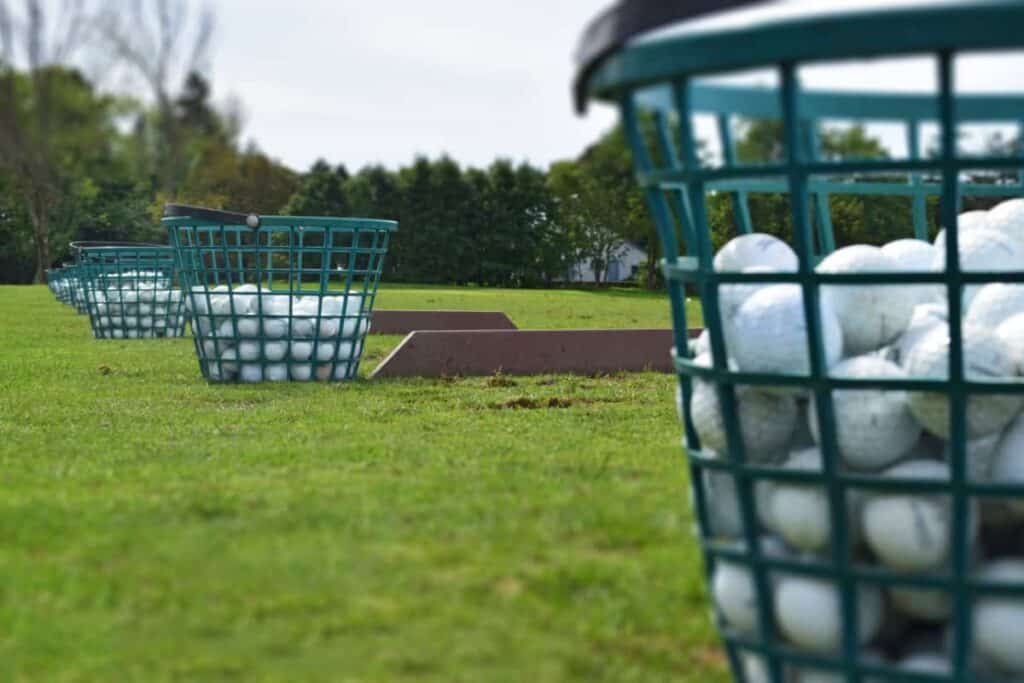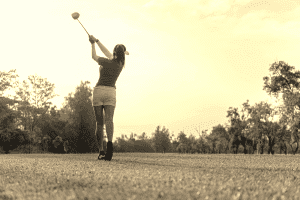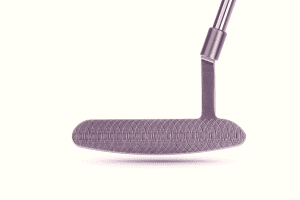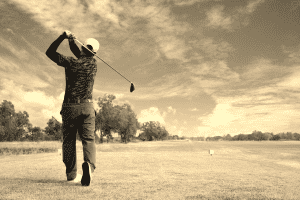Heading to the driving range can and should be much more than a quick warm up before you go play golf. The range is an excellent place to hone your craft and make real changes to your swing, which can result in staggeringly better play. The range gives you a unique chance to work on technique, build muscle memory, and dial in consistency, all without the pressure of a scorecard. Like any good habit, effective range practice requires a calculated approach—you need to know what to work on to yield the best results.
There are a number of things that all great golfers do when they go to practice on the range. If you haven’t been around many elite golfers, you may not pick up on some of these things. From proper warm ups to block practice and drills, each part of your range practice will help you lay the foundation for a reliable, consistent golf swing.
Most amateur golfers lack structure when they head out to the driving range for practice. Too often when I’m out practicing I see someone come out, rush through a bucket of balls, make no improvements (and very few solid strikes), then leave.
You wouldn’t go to the gym and have zero plan, and this should be no different. So let’s look at our top tips for a driving range practice to actually get better- and it all starts with a well-structured driving range routine.
How to Master Practice on the Driving Range
These few bits of information lay the foundation of a better driving range practice session. These are all fundamentals to implement into practice- and the vast majority of them have been passed onto me by my swing coach, and other PGA professionals!
Stretch and Warm Up First
Before you hit your first ball, take the time to stretch and warm up your body. There’s concrete data showing that stretching promotes hitting the ball further, and why would you want to sacrifice shot quality when you’re practicing? Ideally, spend about 5 minutes getting loose- get your spine more mobile, your legs warmed up, and you’re already primed for better practice.
Once you’re loose, it’s good to hit a few shots between pitches, full swings etc with no particular target, just to reignite your mind body connection of the golf swing.
Quality Over Quantity
This is one of the most important things to realize; more shots do not equate to better shots. So how do you implement better quality?
- Make 2-3 practice swings with intent, then step in and hit a ball. More reps will help you engrain a feel, rather than rifling through balls with no direction.
- Have a plan. Know what you’re there to work on. Whether you’re working on shot shaping, ball trajectory, or even speed training, go into your session knowing what the goal is.
- Quality over quantity will ultimately mean you’re more focused. Better focus usually will yield better, longer lasting results.
Don’t Rush Your Session
A rushed practice session at the range can reinforce bad habits quickly. It’s important to practice similarly to how you play, and in turn you should consider going through your pre shot routine before you hit each ball. Taking that extra moment to make sure you’re aligned properly with an ideal set up pays dividends in your golf swing.
Pro tip: Keep the balls in the bucket, so that you can’t just rapid fire them. If you have to retrieve each ball it forces you to work on your routine and readdress the ball each time.
Work on Swing Drills
There should always be a portion of your session that you work on some sort of swing drill. Chances are, your swing has a flaw. If you know what the flaw is- have a go to swing drill that helps you address it.
If you’re not sure where to find drills, there are countless teaching pros on YouTube that have really good content available. Here’s one drill I do a lot from Adam Porzak (this guy is unreal):
Make Swing Changes at Slower Swing Speeds to Start
When making adjustments to your swing, begin at slower swing speeds. Think about it- if you can’t do the correct movement at 25% or 50% speed, how the hell are you going to do it at full speed?
Do 3-5 swings at about 50% speed or less, then do a couple at full speed. Doing this should get things moving in the right direction, and help you actually engrain the move.
Use Swing Videos for Instant Feedback
Here’s one I’m really big on: take a video. You may think you’re doing one thing, but when you play the tape? It’s probably much different than you thought. Take a video, and see how close you are to hitting certain positions. If you’re way off, you know you need to spend time working on your new move more. Quick review of these videos provide instant feedback, and can help you avoid time wasting.
Try a video from this angle:
Different Types of Range Practice
Outside of swing drills and working, it’s good to know some common terminology around driving range practice.
Here are a few different ways to use your range time.
Block Practice
In block practice, you’re focusing on one specific skill by repeating the same shot over and over. This can build muscle memory and is a great way to work on your swing mechanics. Most of the time, I spend a significant portion of my range session on block practice. For instance, I’ll hit 10-15 pitching wedges before I move onto 10+ 7 irons. More swings with the same club can really help lock a feel in, and more importantly get you comfortable with what you’re working on.
Randomized Practice
As the title suggests, when you randomize your practice session, you are constantly changing it up. Instead of sticking to one club or one target, switch between clubs, targets, and shot types regularly. This mimics the unpredictability you face on the course and can sharpen your adaptability and overall swing feels. This is more similar to what it may be like out playing, and is worth spending time doing.
Play a Few Holes in Your Head
Get creative and simulate playing a few holes of the course you’re about to play. I always like to do this at the end of a practice session, especially if I’m about to go play 9 or 18. This mental practice helps with both shot planning and visualization. Build the fairway, rough, and have a rough idea of distances you’re looking for to simulate tee to green shots. Don’t be shy on adding some chips in if you miss your imaginary green.
Practicing Pre Shot Routine
Developing a consistent pre-shot routine can help calm your nerves and set you up for success with each swing. Use this time at the range to refine that routine until it becomes second nature. Remember, consistency in your setup leads to consistency in your shots. This is a massively important concept in golf, and can’t be covered in just a few sentences. Find your pre-shot routine, stick to it, and set your round on autopilot.
Bring it to the Course
When you’re pounding balls on the driving range, your ultimate goal is to see those skills translate beautifully to the golf course. But sometimes, there’s a disconnect. Let’s bridge that gap.
Give it time: You can’t expect to go out and shoot your best score right after your first session on a swing change. It takes time to translate, but proper practice makes that time go much faster. Even Tiger Woods has said there’s a lag between range, round, and tournament round swing changes. If it’s tough for him, it’s definitely tough for us.
Routine Is Key: Every shot on the course usually starts with a pre-shot routine. Mimic that on the range. Align yourself, visualize the shot, and make a practice swing. Making your practice as course-like as possible can smooth out the transition from range to reality.
Use these tips at your next range practice session, and watch yourself actually start to get better.









